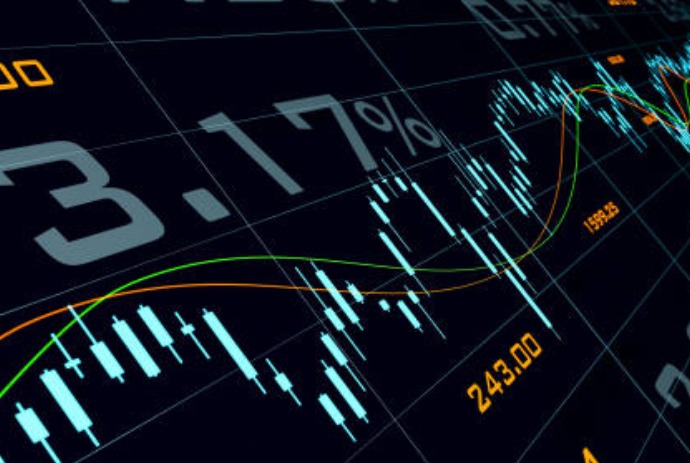
CFD stands for Contract for Difference, and it’s a financial derivative that allows traders to speculate on the price movements of various assets without actually owning them. This might sound like a complex concept, but let’s break it down into something more digestible.
Imagine you’re at a racetrack, and you’re not betting on a horse to win, but rather on the difference in the odds between when you place your bet and when the race ends. That’s the essence of CFD trading. You’re not buying the horse (or in this case, the asset), you’re betting on how its value will change.
Now, let’s talk about trading platforms. These are the digital racetracks where CFD trading happens. They provide the tools, the data, and the interface that allow you to place your bets, or rather, execute your trades. A good trading platform can make all the difference in the world of CFD trading. It’s not just about the features; it’s about the user experience, the reliability, and the support you get when things go wrong.
Easy Navigation
The Power of Leverage in CFD Trading
One of the most attractive aspects of cfd trading is the power of leverage. Leverage allows you to control a larger position in the market with a smaller amount of capital. It’s like having a magnifying glass that amplifies your potential gains, but also your potential losses. This is a double-edged sword, and it’s crucial to understand how to wield it responsibly.
Using leverage effectively can supercharge your trading strategy. It allows you to make significant moves in the market with a modest investment. However, it’s important to remember that with great power comes great responsibility. Misusing leverage can lead to substantial losses, so it’s essential to have a solid risk management strategy in place.
Choosing the Right Trading Platform
When it comes to choosing a trading platform, there are several factors to consider. The platform should offer a wide range of assets to trade, from stocks and indices to commodities and currencies. This diversity is crucial for traders who want to spread their risk across different markets.
The user interface should be intuitive and easy to navigate, even for beginners. After all, the last thing you want when the market is moving fast is to be fumbling with complex menus. A good platform will also offer educational resources to help you learn the ropes and improve your trading skills.
The Importance of Regulation and Security
In the world of CFD trading, regulation and security are paramount. You want to ensure that your trading platform is regulated by a reputable financial authority. This provides a layer of protection and ensures that the platform adheres to strict standards of conduct.
Security is another critical aspect. Your personal and financial information should be safeguarded with the latest encryption technology. You also want to make sure that the platform has robust security measures in place to protect against cyber threats.
Trading Tools and Features
A top-notch trading platform will offer a variety of tools and features to help you make informed decisions. This includes charting tools, technical indicators, and news feeds that keep you up-to-date with market movements.
Some platforms also offer advanced features like algorithmic trading, which allows you to automate your trades based on predefined criteria. This can be a game-changer for traders who want to execute complex strategies without being glued to their screens.
Customer Support and Community
When things go wrong, or when you have questions, you want to know that you can get help quickly. A good trading platform will offer 24/7 customer support via phone, email, and live chat.
Additionally, being part of a trading community can be incredibly valuable. It allows you to share ideas, strategies, and insights with other traders. This collaborative environment can help you learn from the experiences of others and improve your own trading.
The Art of Risk Management in CFD Trading
Risk management is an art form in itself. It’s about balancing your potential for profit with the risk of loss. This involves setting stop-loss orders to limit your potential losses and take-profit orders to secure your gains.
It’s also about diversifying your portfolio to spread risk across different assets. The more you diversify, the less impact a single losing trade can have on your overall portfolio. This is especially important in CFD trading, where leverage can amplify both your gains and your losses.
Staying Informed and Adapting to Market Changes
The financial markets are constantly changing, and staying informed is crucial for success in CFD trading. This means keeping up with the latest news, economic data, and market analysis.
A good trading platform will provide you with the tools to stay informed, such as real-time market data and news updates. This allows you to make timely decisions based on the most current information.
Adapting to market changes is also key. This might mean adjusting your trading strategy, or it might mean being prepared to act quickly when a new opportunity arises. Flexibility and agility are essential traits for a successful CFD trader.
Conclusion
CFD trading, when done right, can be an exciting and profitable venture. With the right trading platform by your side, you have the tools and resources to navigate the markets with confidence. Remember, knowledge is power in the world of trading, and the more you learn, the better equipped you’ll be to make smart decisions and unlock the secrets of profitable trading.